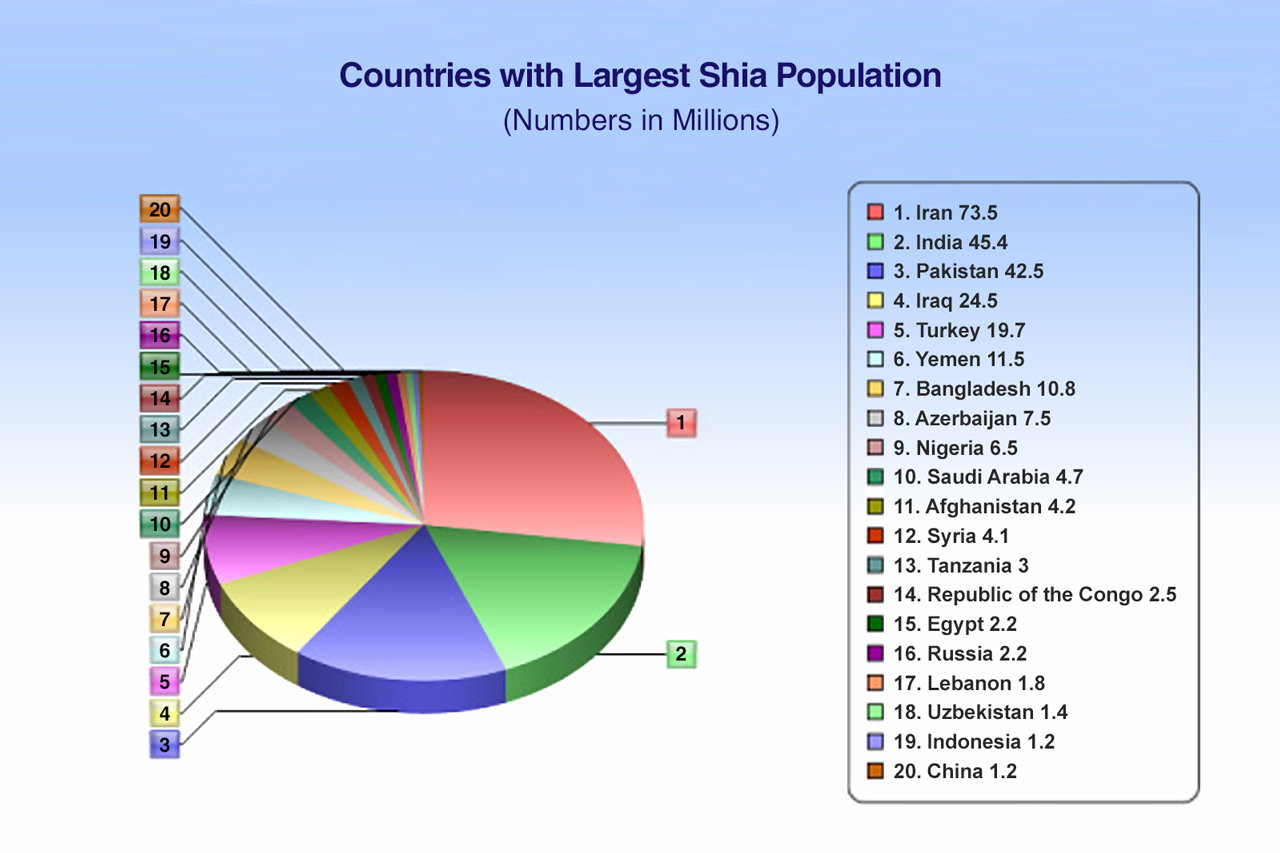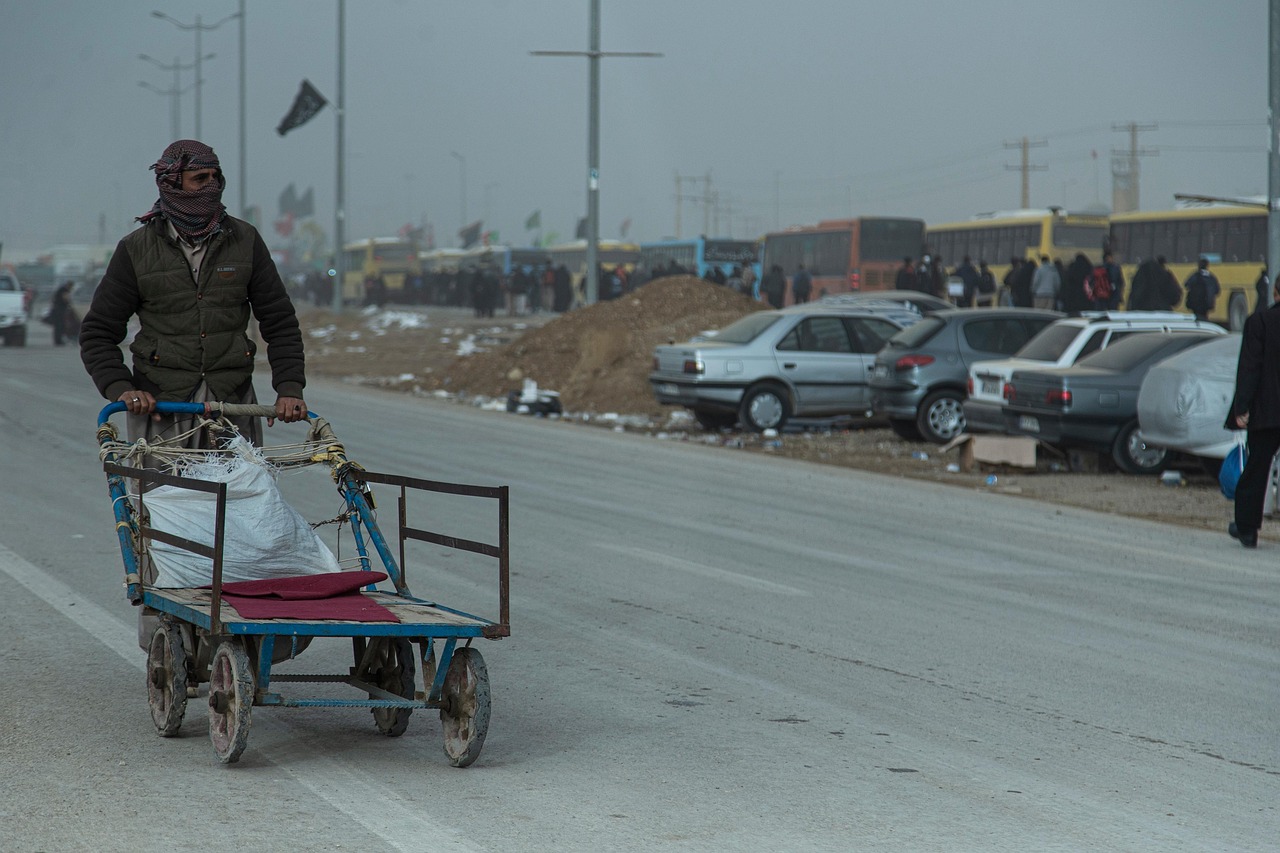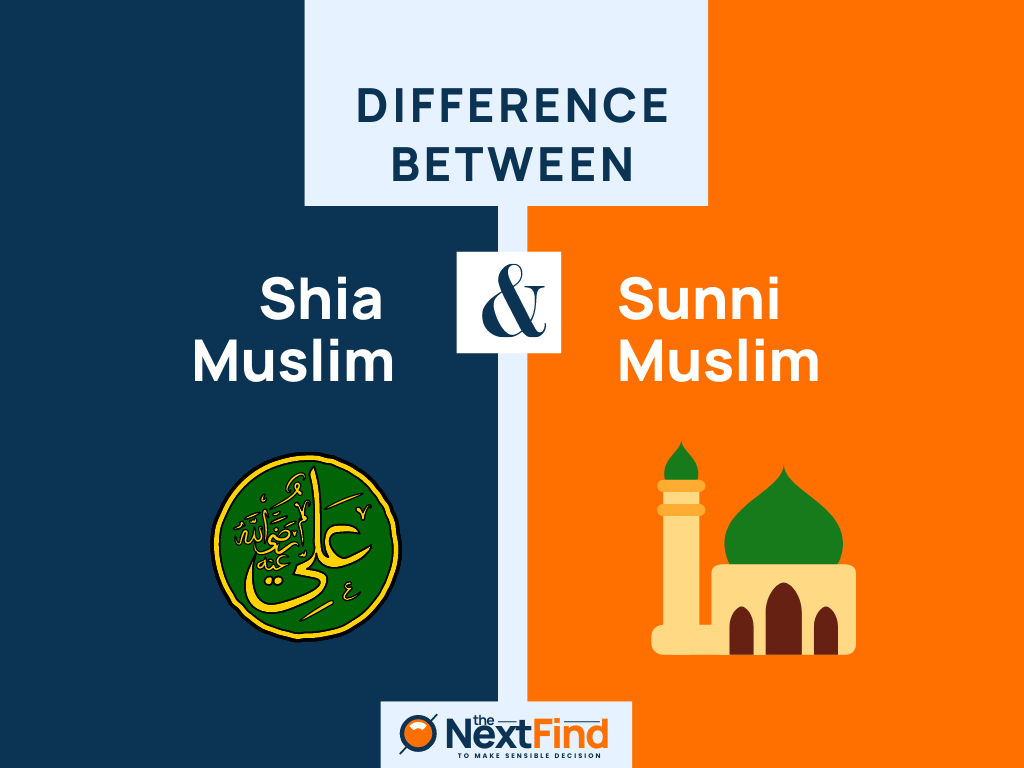Many people wonder about the makeup of populations in different parts of the world, and for those curious about the Middle East, particularly Iran, questions often come up regarding the presence of Shia Muslims there. It's a topic that, you know, really sparks a lot of interest for folks trying to get a handle on different cultures and belief systems across the globe. We hear about various groups, and sometimes, the details can seem a little hazy, so it’s natural to want a clearer picture of who lives where and what traditions they follow.
This faith group, which is actually the second largest branch of Islam, holds a very significant place in the country, that is true. It's one of just a few nations where followers of Shia Islam make up the main portion of the people living there, you know. This makes Iran a particularly interesting place to consider when you are looking at the overall distribution of Muslim communities around the world, especially since most global Muslims are Sunni, so this is quite different, in a way.
To truly grasp what this means for the region and for the broader Muslim world, it helps to look at the history and basic beliefs that set Shia Islam apart, so to speak. It’s not just about numbers; it’s about understanding the deep historical threads and spiritual convictions that shape the identity of these communities, particularly when we think about how the Shia Muslim percentage in Iran came to be such a prominent feature of the nation’s identity, you see.
- Final Jeopardy Questions And Answers
- Johnny Depp Background
- George Straits Sons Statement
- How Old Was Whitney Houston When She Passed
- Finaljeopardy Answer
Table of Contents
- How Many Shia Muslims Are There Globally?
- What Makes Shia Muslims Different?
- Historical Roots - The Origins of the Shia-Sunni Split
- Understanding Shia Identity and the Shia Muslim Percentage in Iran
- Core Beliefs Shared by Shia Muslims
- Where Else Do Shia Communities Live?
- Why Is the Shia Muslim Percentage in Iran Significant?
- Exploring Historical Influences on the Shia Muslim Percentage in Iran
How Many Shia Muslims Are There Globally?
When we consider the vast number of Muslims across the planet, it’s quite something to think about the different groups within this faith. Currently, there are about 1.6 billion Muslims around the world, which is a truly immense population, you know. Out of this very large group, Shia Muslims account for almost 20 percent of them, which, when you do the sums, means hundreds of millions of people follow this particular branch of Islam. This figure gives us a good starting point for appreciating the scale of Shia communities worldwide, actually.
It’s a considerable portion, even though it is the smaller of the two major branches of Islam, with the majority being Sunni Muslims, as a matter of fact. This distribution, where a significant segment of the global Muslim population identifies as Shia, speaks to the wide reach and enduring nature of this tradition. So, while you might hear more about Sunni Islam due to its larger numbers, the presence of Shia Muslims is undeniably a major part of the overall picture of the global Muslim community, that is for sure.
This nearly one-fifth share of the total Muslim population indicates a widespread presence, even if the communities are not evenly spread out across all countries, you see. It means that in many places, people are practicing Shia Islam, maintaining their distinct traditions and interpretations of faith. This global distribution is something that, you know, shapes cultural and social landscapes in various regions, making it a topic of interest for anyone looking to understand the world's diverse belief systems, basically.
What Makes Shia Muslims Different?
To really get a handle on Shia Islam, it helps to look at what sets it apart from the majority Sunni branch. The core distinction, you know, goes back to a disagreement over who should have led the Muslim community after the passing of Prophet Muhammad. This difference in opinion about political and spiritual leadership is what initially separated Shia and Sunni Muslims, and it’s a point that remains central to their separate identities, in a way.
Followers of Shia Islam, sometimes called Shias of Ali, or simply Shias, or the Shi'a when speaking of them as a group, believe that Prophet Muhammad, under the command of God, chose Ali as his caliph, which means successor. This belief in Ali as the rightful spiritual and political leader right after the Prophet is a very fundamental aspect of Shia theology, you see. This is where their unique path truly begins, as it shapes their views on religious authority and succession, apparently.
This particular belief about succession is what distinguishes them from the majority Sunnis, who follow a different path regarding leadership after the Prophet. So, while both groups share the foundational tenets of Islam, this specific point of leadership succession is what makes the Shiʿi, as an individual member is called, distinct. It's a difference that, you know, has led to separate interpretations of religious law and spiritual guidance over many centuries, still influencing communities today.
Historical Roots - The Origins of the Shia-Sunni Split
The split between the Sunnis and the Shiʿah has very deep roots in history, actually, going back to the earliest days of Islam. It wasn't just a simple disagreement, but rather a complex unfolding of events that led to distinct paths for the two major branches. The origins of this separation are really about the question of who should lead the Muslim community following the passing of the Prophet Muhammad, as I was saying.
From the Shia perspective, the Prophet Muhammad, acting on divine instruction, had designated his son-in-law and cousin, Ali, to be his successor, both as a political leader and a spiritual guide. This idea of a chosen, divinely appointed leader is central to Shia belief, you know. They hold that leadership should pass down through the Prophet's family, specifically through Ali and his descendants, who are seen as infallible imams, or spiritual guides, in a way.
On the other hand, the Sunni tradition followed a different path, where leadership was determined by community consensus and election, rather than direct lineage. This fundamental difference in how leaders should be chosen and who holds spiritual authority is what created the initial divide, you see. It's a historical overview that details how divisions of political and spiritual leadership truly separated Shia and Sunni Muslims, shaping their respective identities and practices over the many centuries that followed, basically.
Understanding Shia Identity and the Shia Muslim Percentage in Iran
When we look at the Shia Muslim percentage in Iran, it’s important to understand that this country stands out as one of the few places where Shia Muslims form a majority of the population. This isn't just a small group; it is the dominant religious identity for the people there. This makes Iran a very significant nation in the context of global Shia Islam, actually, as it is one of only three countries across the Muslim world where this is the case, apparently.
The historical events that unfolded over time have profoundly shaped Shia identity, particularly within Iran. These events, often involving periods of both flourishing and persecution, helped to solidify the distinct beliefs and practices that characterize Shia Islam in the region, you know. The collective experiences of the community have contributed to a strong sense of shared heritage and purpose among Shia Muslims in Iran, making their identity deeply intertwined with the nation's history, in a way.
While we are discussing the Shia Muslim percentage in Iran, it's worth noting that the prominence of Shia Islam there has led to a unique cultural and political landscape. The theological aspects of Shia belief, such as the veneration of the Prophet's family and the role of religious scholars, are deeply embedded in the societal fabric. This means that the majority Shia population influences everything from daily life to national governance, making the study of Iran's demographics a fascinating exploration of faith and society, you see.
Core Beliefs Shared by Shia Muslims
It's very important to remember that despite the historical and theological distinctions, a Shia Muslim shares the fundamental theological beliefs of Islam, just like any other Muslim, you know. These core beliefs are the bedrock of the faith for all adherents, regardless of which branch they follow. This shared foundation is what unites the broader Muslim community, even with their internal variations, that is for sure.
Among these foundational beliefs is the oneness of God, which is the absolute central tenet of Islam. This means there is only one God, who is unique and has no partners or equals. This concept of monotheism is something that all Muslims hold dear and is expressed in their daily prayers and declarations of faith, you see. It’s a belief that guides every aspect of a Muslim’s life, providing a sense of purpose and direction, basically.
Furthermore, all Muslims, including Shia Muslims, believe in prophethood, accepting Prophet Muhammad (peace be upon him and his progeny) as the final messenger sent by God to humanity. The finality of Prophet Muhammad is a very crucial aspect of their faith, meaning that no new prophets will come after him. And, of course, the Holy Quran is recognized as the literal word of God, revealed to Prophet Muhammad, serving as the ultimate guide for life, which is something they all agree on, actually.
These shared principles highlight that while there are differences in interpretation and historical lineage, the core spiritual convictions of Shia Muslims align with the broader Islamic faith. Their adherence to these fundamental beliefs demonstrates a deep connection to the universal messages of Islam, even as they maintain their specific traditions and practices that have developed over centuries, so to speak.
Where Else Do Shia Communities Live?
While Iran is indeed a nation where Shia Muslims form the majority, it's not the only place where significant Shia communities are found across the globe, you know. Their presence extends to various other countries, contributing to the diverse religious landscape of the Muslim world. These communities, often with long histories, have established themselves in different regions, maintaining their unique cultural and religious practices, in a way.
For example, significant Shia communities are also found in Bahrain, where they constitute a very considerable portion of the population, even if they are not the ruling group. Lebanon is another country with a notable Shia presence, playing a very important role in its political and social structure, you see. These communities in Lebanon have deep historical roots and are a key part of the country’s diverse religious tapestry, apparently.
Kuwait also hosts a sizable Shia community, adding to the cultural richness of the Gulf region. And if we look a little further afield, Turkey, a country often associated with Sunni Islam, also has a significant number of Shia adherents, primarily Alevis, who share some commonalities with mainstream Shia Islam. These examples show that the Shia Muslim population is distributed across many different nations, each community contributing to the unique character of its respective country, as a matter of fact.
This widespread distribution means that discussions about the Shia Muslim percentage in Iran are part of a larger conversation about the global presence and influence of Shia Islam. It's a reminder that while certain countries may have a majority, the followers of this branch of Islam are truly international, with their traditions and beliefs enriching many different societies around the world, so to speak.
Why Is the Shia Muslim Percentage in Iran Significant?
The fact that Shia Muslims make up the majority of the population in Iran is a matter of considerable importance, you know, for several reasons. It means that the country’s national identity, its cultural expressions, and its political system are deeply influenced by Shia Islamic principles and traditions. This is not just a demographic fact; it shapes the very character of the nation, that is for sure.
Given that Shia Muslims form a majority in only a handful of countries worldwide, Iran’s status as a predominantly Shia nation gives it a unique position within the broader Muslim world. This distinct demographic reality means that Iran often plays a particular role in regional dynamics and international relations, as its policies and perspectives are often viewed through the lens of its dominant religious identity, you see. This is quite different from countries where Sunni Islam is the main faith, or where Muslims are a minority, apparently.
The significance of the Shia Muslim percentage in Iran also extends to the global discourse on Islam. It provides a prominent example of a state where Shia jurisprudence and theology are actively applied in governance and daily life. This living example helps to deepen the understanding of Shia Islam for people around the world, allowing them to learn about its origins, beliefs, practices, and contributions in a very tangible way. It’s a very real illustration of how a particular branch of Islam can shape an entire society, basically.
So, when we consider the Shia Muslim percentage in Iran, it's not just about a number, but about the profound impact this majority status has on the country's past, present, and future. It's a key factor in understanding its internal affairs and its interactions on the world stage, as a matter of fact, making it a topic that holds a lot of weight for those studying geopolitics and religious studies, you know.
Exploring Historical Influences on the Shia Muslim Percentage in Iran
To truly grasp the Shia Muslim percentage in Iran today, it’s really helpful to look back at how historical events have shaped Shia identity within that region. The current demographic makeup isn't just a random occurrence; it's the result of centuries of historical developments, including political shifts, religious movements, and social changes, you see. These past happenings have played a very significant role in solidifying Shia Islam as the dominant faith in Iran, in a way.
Historical events, sometimes spanning many generations, have profoundly influenced how Shia identity has been formed and maintained. These events helped to establish and reinforce the theological frameworks and communal practices that are central to Shia belief. For instance, periods of state sponsorship or popular adoption of Shia Islam over time contributed to its widespread acceptance and growth within the geographical area that is now Iran, you know. This process was gradual, but it was very impactful, apparently.
Examining the theological aspects that emerged from these historical periods also helps us understand the current Shia Muslim percentage in Iran. The development of specific Shia schools of thought, the role of prominent religious scholars, and the establishment of religious institutions all contributed to the unique character of Shia Islam in Iran. These elements, shaped by the passage of time, have created a deeply rooted religious tradition that continues to define a large part of the population, so to speak.
So, the current prevalence of Shia Muslims in Iran is a living testament to how historical forces can mold the religious landscape of a nation. It’s a complex story of faith, power, and community, all coming together to create the unique demographic situation we see today. Understanding this historical journey is key to appreciating the depth and significance of the Shia Muslim presence in Iran, as a matter of fact.
Related Resources:



Detail Author:
- Name : Nina Quitzon
- Username : wisoky.camden
- Email : kristoffer67@yahoo.com
- Birthdate : 2002-07-09
- Address : 2130 Rogahn Divide Suite 227 Nestorport, MO 00943
- Phone : +1-785-983-2430
- Company : Powlowski, Kassulke and Wunsch
- Job : Boat Builder and Shipwright
- Bio : Necessitatibus accusantium quia et qui possimus aut odit. Repudiandae vero quasi necessitatibus ullam eius nulla aut. Aut voluptatem est aliquam tenetur ex fuga iste.
Socials
linkedin:
- url : https://linkedin.com/in/torphy1999
- username : torphy1999
- bio : Maxime laboriosam totam et.
- followers : 4080
- following : 2801
twitter:
- url : https://twitter.com/tyson_torphy
- username : tyson_torphy
- bio : Non ut sunt aut veritatis distinctio minima molestiae. Possimus consequatur quia odit quidem. Odit quia voluptas facere amet ipsam maiores.
- followers : 2391
- following : 2316
facebook:
- url : https://facebook.com/torphyt
- username : torphyt
- bio : Quod numquam ut dolor rem magnam adipisci. Enim nesciunt aut qui vel quam est.
- followers : 1774
- following : 1542